DRIVING FUTURE THE
Smart networks that underpin smart buildings

INVESTMENTS
ENHANCING PARTNER CAPABILITIES
UNLOCKING UNSTRUCTURED DATA
































Smart networks that underpin smart buildings

INVESTMENTS
ENHANCING PARTNER CAPABILITIES
UNLOCKING UNSTRUCTURED DATA































As technology moves forward at lightning speed, staying ahead isn’t just about embracing innovation—it’s about strategic foresight, collaboration, and adaptability. In this edition, we’re excited to take you on a journey through the key developments shaping our tech world, from AI breakthroughs to the latest in cybersecurity, and how channel partners are playing a vital role in building the digital future.
In our cover story, Shahnawaz Siddiqui of Allied Telesis offers a fascinating look at how converged network solutions are powering the smart buildings of tomorrow. We also feature the inspiring stories of Kinda Baydoun from Veeam, who shares her experiences navigating the dynamic channel landscape, and Mario Veljovic from VAD Technologies, who reflects on his journey through the channel ecosystem, offering practical wisdom for the next generation of leaders.
Nicolai Solling from Help AG shares his insights on how to make the most of cybersecurity investments without overspending, while Sakkeer Hussain from D-Link discusses how their latest network solutions are meeting the growing connectivity needs of SMBs. Naji Salama of IT Max Global explores how AI and machine learning are transforming data security in the UAE, with 2024 marking a surge in investment to protect against emerging threats.
We’re also shining a spotlight on the power of partnerships. Gerard Allison from Sophos highlights their “channel-first” strategy and the importance of collaboration in combating ransomware. Ahmad Uzair of TechZoetic reveals how they’re helping channel partners expand across the GCC, while Murali Konasani from Teksalah emphasises the crucial role cybersecurity plays in shaping enterprise strategies. Rick Vanover from Veeam explains the importance of a zero-trust backup approach to fend off today’s evolving threats.
As AI continues to reshape industries, Tassos Peppas from Vertiv gives us an in-depth look at the advancements in AI infrastructure, while Thierry Nicault from Salesforce shares how unstructured data can unlock new growth opportunities for businesses.
We hope you enjoy diving into these topics as much as we did bringing them together for you. Let’s explore how to drive growth, innovation, and resilience in this ever-changing digital world—together.
Happy reading!
Published by
Publication licensed by Sharjah Media City
@Copyright 2024 Insight Media and Publishing
Managing Editor
Adelle Geronimo
adelleg@insightmediame.com
+97156 - 4847568
Production Head
James Tharian
jamest@insightmediame.com
+97156 - 4945966
Sales Director
Merle Carrasco
merlec@insightmediame.com
+97155 - 1181730
Administration Manager Fahida Afaf Bangod
fahidaa@insightmediame.com
+97156 - 5741456
Operations Director
Rajeesh Nair
rajeeshm@insightmediame.com
+97155 - 9383094
Designer Anup Sathyan
While the publisher has made all efforts to ensure the accuracy of information in this magazine, they will not be held responsible for any errors
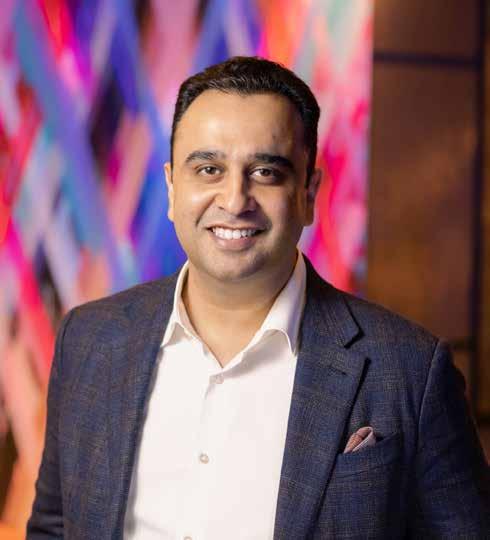
Confluent announced the Confluent OEM Programme. The new programme for managed service providers (MSPs), cloud service providers (CSPs), and independent software vendors (ISVs) makes it easy to launch and enhance customer offerings with a complete data streaming platform for Apache Kafka and Apache Flink. With licence to globally redistribute or embed Confluent’s enterprise-grade platform, partners can bring real-time products and Kafka offerings to market faster and easily monetise customer demand for data streaming with limited risk.
“As data-driven technologies like GenAI become essential to enterprise operations, conversation has shifted from ‘if’ or ‘when’ a business will
need data streaming to ‘what’s the fastest, most cost-effective way to get started?’” said Kamal Brar, Senior Vice President, Worldwide ISV and APAC, Confluent. “We help our partners unlock new revenue streams by meeting the growing demand for real-time data within every region they serve. Confluent offers the fastest route to delivering enterprisegrade data streaming, enabling partners to accelerate service delivery, reduce support costs, and minimise overall complexity and risk.”
Grow faster with enterprise-grade data streaming
The Confluent OEM Programme alleviates the burdens of self-
managing open-source technologies while going far beyond just Kafka and Flink. Confluent simplifies data streaming by eliminating the operational complexities of opensource deployments, accelerating delivery times, and ensuring customer success through ongoing expert support. Secure, governed data streams can be available wherever needed—on-premises, at the edge, and in the cloud.
MSPs and CSPs can easily deliver a complete data streaming platform through Confluent, providing a hassle-free solution for unlocking more customer projects across AI, real-time analytics, application modernisation and more. ISVs can embed Confluent within their products or applications to costeffectively power modern customer experiences fueled by real-time data.
OEM Programme benefits include:
• Design review and development support – Build your data streaming offering with architectural guidance and hands-on development support from Confluent’s team with over 1 million Kafka development hours logged.
• Speed to market – Accelerate time to value with a complete, ready-to-use data streaming platform including 120+ Kafka connectors, Flink stream processing, enterprise-grade security and data quality controls, and cloud-based monitoring.
• Confluent certification – Launch confidently with proof that your product or data streaming offering is approved and backed by the industry leader.
• Flexible commercial terms
– Package customer-facing offerings easily with commercial terms that match the way you sell.
• Expert technical support –Bring committer-led Kafka and Flink support to your business and easily handle any customer question or issue.
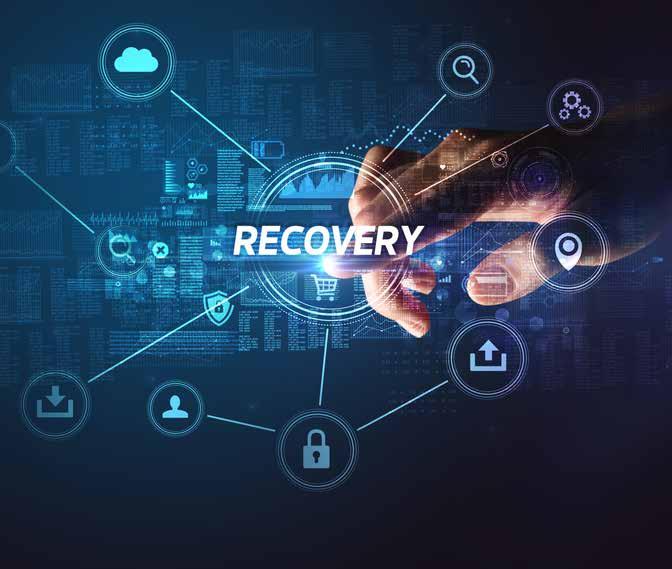
Veritas Technologies unveiled new AI-driven capabilities to further expand the strength and functionality of the Veritas cyber resilience portfolio. The innovations, including AI-powered automation and user interface enhancements, provide data protection specialists and IT generalists with intelligent, easy-to-use solutions that remove the uncertainty from cyber recovery.
Johnny Karam, Managing Director & Vice President of the International Emerging Region at Veritas Technologies, said: “Strengthening the cyber resilience of organisations is at the core of our mission and we focused on making recovery simpler, smarter and faster for all our customers in UAE and across the region. By simplifying data recovery processes and automating critical classification and access processes, we empower organisations to safeguard their data and ensure business continuity in a rapidly evolving threat landscape. With our latest expanded AI assistance and
intuitive management, we eliminate risk from the recovery process. This is particularly important in regions like the UAE, where clear recognition of the value and efficiency of AI driven applications for business is driving the adoption of these tools at an unprecedented rate, leading to exponential increases in the volume and value of data being created. AI applications must also be implemented to ensure cyber resilience and data security are maintained during the rapid digital transformation going on across all industries in our region, and to ensure organisations can recover from potential ransomware attacks quickly and confidently, minimising business disruption”
New enhanced user interface and AI-driven features make cyber recovery simpler, smarter and faster through the following improvements:
• Simplify navigation and operations – The Veritas Alta View management platform features an enhanced highly intuitive user
interface, streamlining navigation and making operations simple for both IT specialists and multitasking generalists. The dashboard integrates AI-driven insights and a cyber risk score for real-time, actionable analytics. Enhanced visualisation tools allow users to monitor their entire data estate, proactively manage risks and expedite cyber recovery.
• Automate asset audits and policy creation – Veritas Alta Copilot automatically scans and identifies unprotected assets, recommends and applies tailored protection, and instantly integrates with existing protection policies to ensure that all critical data is covered.
• Speed up threat detection and response – Enhanced security, accelerated threat detection, and more rapid ransomware response is now delivered through hash-based tracking of malware in backup data and blast radius analysis. Once malware is identified, new functionality reduces the time to scan and assess the spread across the entire estate by up to 93 per cent.
• Mitigate risks and cyber threats with automated recovery blueprints – Proactive disaster management and cyber recovery can now be achieved using a new interactive guide that enables IT teams to easily create, automate, test, and edit workflow plans. Blueprints can be customised at a granular level across multiple domains, including complex hybrid, platform-as-a-service, and container environments –ensuring tailored and effective risk management.
• Automate recovery point recommendations – Optimised recovery is now possible through proactive, in-depth analysis that provides recommended recovery points. This reduces recovery time and potential data loss by eliminating the need to manually identify the “last known good copy,” relying instead on risk engine analysis to minimise the dependence on costly malware scans.
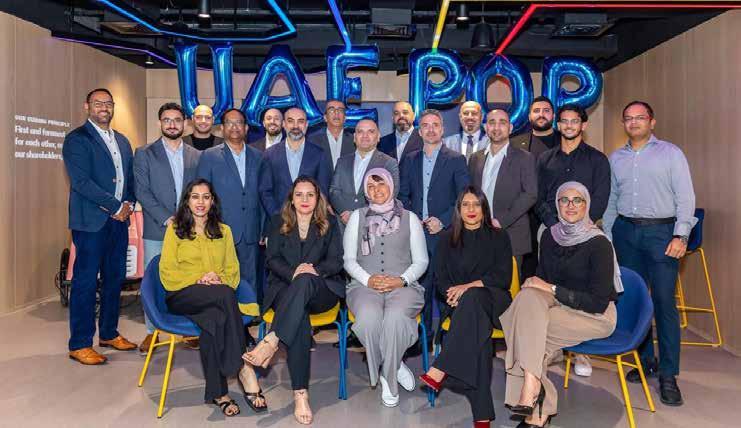
F5 has expanded its global network with a new point of presence (PoP) in the United Arab Emirates (UAE). Now up and running, the PoP is part of a purpose-built cloud-native platform that connects and secures distributed applications in multi-cloud and edge environments.
“The ability to manage and protect application workloads via an F5 PoP will be hugely beneficial for both our existing and future customers across the region. Optimised for app-to-app connectivity and security, our PoPs stand out in the market by consolidating multiple services across monolithic and microservices apps. This significantly simplifies app and API management, security, as well as network connectivity across distributed infrastructures,” said Mohammed Abukhater, RVP for the Middle East, Türkiye and Africa at F5.
Providing 15+ Tbps of peered capacity, all F5 PoPs are interconnected using a dedicated and redundant private backbone, multiple transit and peering connections for direct connectivity across multiple cloud
providers, enterprise cloud and edge locations, and telecom operators.
It also gives customers the capability to offload high-performance or latencysensitive workloads, and functions as a distributed control plane with software running on the customer’s edge or cloud site.
Furthermore, the F5 Distributed Cloud Platform provides routing, SD-WAN termination, load balancing, multi-layer security, Kubernetesbased app orchestration, and a globally distributed app gateway, all of which are accessible from every PoP on the F5 global network.
Other notable PoP features include:
• DDoS protection. Automatic security for infrastructure and apps across hybrid- or multi-cloud with global L3–L7 DDoS protection.
• Network security. Network Firewall and anomaly-based detection to prevent attacks at L3 and L4. The PoP can leverage private connectivity over the public Internet via the integrated mesh software stack, which extends network security to the customer environment.
• Application security. Using a combination of threat feeds, signature matching, and advanced algorithmic + AI/ML techniques, F5 protects customer APIs and applications from attacks via the public Internet or within the enterprise.
• Physical security. All F5 PoPs are built in major colocation facilities at Equinix, Digital Realty, Telehouse, and Cologix with strict security procedures like video sensors, biometrics, and human verification to ensure secure platform access.
“Today, organisations manage huge numbers of applications, connected by APIs, that span both traditional and modern architectures and are distributed across multiple clouds, SaaS, on-premises data centres, and edge sites. At the same time, apps have become the front door to cybercrime, and APIs are increasingly the key. F5 is the only solution provider that can secure, deliver, and optimise any app and any API – regardless of location,” added Abukhater.

Check Point Software Technologies unveiled its innovative Portal designed for both managed security service providers (MSSPs) and distributors. This platform significantly simplifies service delivery and enhances the ease of doing business with Check Point.
According to Canalys, the global MSSP market is projected to grow by 14.2 per cent annually, driven by increasing cyber threats and the need for specialised security services. However, MSSPs and channel partners today face a range of challenges—from efficiently scaling their services, managing multiple customers
across disparate security solutions, ensuring compliance with evolving industry regulations, to balancing operational costs with profitability. The Check Point MSSP Portal offers a powerful solution to overcome these hurdles, enhancing security and streamlining operations.
Francisco Criado, Check Point’s VP of Global Partner Ecosystem Organisation, said, “Our new Portal is here to make life easier for our valued partners, enhancing efficiency and driving business growth. We are deeply committed to our partner ecosystem, and this Portal stands as
a testament to our dedication, serving as a powerful ally in the fight against cybersecurity threats.”
At the core of these advancements is a meticulously designed, usercentric Portal that enables effortless onboarding of partners—a process that previously took as long as a week and now takes only two minutes. This efficiency not only saves time but also reduces operational costs for MSSPs.
The Portal seamlessly integrates MSSPs into the Check Point Infinity Platform, marking a significant achievement in Check Point’s MSSP programme and transforming business operations.
The Check Point MSSP Portal is not just about enhancing operational efficiency; it’s about transforming the way MSSPs engage with technology, manage services, and ultimately, how they meet the evolving security needs of their clients. It features a range of enhancements including:
• Effortless onboarding: New capabilities empower distributors to onboard MSSPs with the click of a button`
• Diverse Security portfolio: Effortlessly deploy an array of services in minutes, such as endpoint, email, mobile, SASE, and cloud
• Profitability with minimal risk: Flexible billing, predictable revenue, no long-term commitments, or upfront investment
ServiceNow has launched its most comprehensive AI update to date with the Now Platform Xanadu release, introducing a wide array of AI capabilities, expanded partnerships, and industry-specific solutions. These innovations aim to boost productivity across the enterprise.
Key highlights include ServiceNow AI Agents, which are designed to enhance productivity by working around the clock across various functions such as IT, customer service, HR, and procurement. These AI Agents move beyond simple tasks and are capable of advanced reasoning, grounded in data,
to improve employee and customer collaboration. The first AI Agents for Customer Service Management (CSM) and IT Service Management (ITSM) are set to launch in November 2024, promising to reduce mean-time-toresolution and improve agent efficiency.
ServiceNow has also expanded Now Assist, a suite of AI-driven tools that enhance security operations, procurement, and employee productivity. Notable features include Now Assist for SecOps to accelerate threat response and Now Assist Skill Kit, which enables businesses to create custom GenAI skills tailored to specific needs.
Partnerships remain a core focus, with the integration of Microsoft 365 Copilot for improved employee productivity. Additionally, Now Assist has been expanded across industries like telecom, financial services, and retail, offering sector-specific solutions.
ServiceNow is also enhancing developer tools with a new Integrated Development Environment (IDE) and boosting performance with the RaptorDB Pro database, promising faster transaction times and improved scalability.
Most AI features are now available in the ServiceNow Store, with some products expected to roll out through 2025.

NetApp announced that it has become the preferred data infrastructure provider of Aruba, a dominant contributor for web hosting, domain registration, and email account services in Europe. Together, the companies will leverage each other’s specialities to better serve customers, offering new solutions labelled “Powered by NetApp.” As evidence of the elevated partnership, Fabrizo Garrone, Enterprise Solution Director at Aruba will be presenting a session at NetApp INSIGHT 2024: “Aruba builds secure, available, intelligent data infrastructure on NetApp”
Aruba is Italy’s prominent provider of cloud, data centre, hosting, e-mail, domain registration and PEC (certified email) services. Aruba has been a NetApp customer for more than a decade, using NetApp solutions behind the scenes to power its services, but is now expanding the cooperation into a formal partnership. By combining forces, the companies will be able to collaborate on strategic goals and synergistic initiatives to be able to provide optimised data centre solutions, both from the data server and data management side.
“Aruba’s credentials are evident from its long list of top enterprise customers across Europe,” said Gabie Boko, Chief Marketing Officer at NetApp. “By using NetApp solutions, Aruba has been passing on the benefits of intelligent data infrastructure to its customers. This partnership makes those benefits more transparent, so Aruba customers know they are getting the best in data security, management, and visibility with the solutions they buy. It also
creates new opportunities for joint innovation and development to meet the specific needs of customers across Europe, expanding the reach of both Aruba and NetApp.”
To support this partnership, Aruba and NetApp will work together to provide cutting-edge solutions for customers. Aruba will label its flagship services as “Powered by NetApp” to illustrate that they are using NetApp’s powerful data storage and integrated data services. This joint venture will lead to future Aruba flagship products that are “Powered by NetApp.”
“Aruba is dedicated to planning, implementing and managing highly customised technology solutions to support our customers across Europe,” said Fabrizio Garrone, Enterprise Solution Director at Aruba. “For years, NetApp has provided a strong core for our customers’ data with its industryleading data storage and management solutions. This partnership shows our customers the high quality of the infrastructure we provide also thanks to our state-of-the-art data centres. We look forward to developing new, innovative solutions that will serve our customers and prepare them for success now and into the future.”
Milestone Systems announced the release of XProtect 2024 R1. This latest update focuses on improving cybersecurity resilience, streamlining VMS operations, and offering new customisation capabilities to meet evolving customer needs.
Fortifying Cybersecurity, Ensuring Compliance
XProtect 2024 R1 introduces new capabilities aimed at enhancing cybersecurity and ensuring compliance. The XProtect Update Manager simplifies the deployment of hotfixes across multiple servers from a central location. This centralised approach helps safeguard VMS systems and reduces operational costs.
Additionally, the Care Reminder in the Management Client alerts administrators when their Care
subscription is about to expire, allowing them to renew proactively and maintain uninterrupted support.
Enhancing Operational Efficiency, Customisation
XProtect 2024 R1 brings significant enhancements to operational efficiency and customisation options.
The new Multiroom Audio feature in XProtect Hospital Assist enables medical staff to listen to multiple patient rooms simultaneously. The combination of live video and audio provides a comprehensive overview of the patient’s condition enhancing the operational efficiency of the medical staff while empowering them to respond promptly to any critical situation demanding their attention.
The new Combined Media Player Format in the XProtect Smart Client
simplifies the sharing of video exports by allowing users to export multiple video sequences into a single file, streamlining investigations and collaboration.
For XProtect Rapid REVIEW, the 2024 M1 update introduces an optimised user role management experience, ensuring that users have appropriate access rights without compromising security. The new release also includes the innovative Fast Track capability, which enables investigators to locate objects swiftly across adjacent cameras by leveraging the camera geolocation setup in XProtect. Additionally, XProtect Rapid REVIEW M1 features multiple user-experience enhancements, such as the ability to search for cameras by tags, providing a more intuitive interface for operators.




Mario Veljovic, General Manager of VAD Technologies, shares his journey through nearly 30 years in the channel industry, highlighting pivotal moments, overcoming challenges, and adapting to evolving trends
Journey in the channel industry
Mario reflects on his nearly 30-year career in the channel industry, where pivotal moments, strategic decisions, and overcoming obstacles have shaped his path to success. His career took a significant turn during a vendor conference in Florence, Italy, back in 2003. He recalls the moment vividly: while attending the event with his wife, Ingram Micro Europe offered him the opportunity to lead a joint venture with Aptec in the Middle East, a decision that would require relocating to Dubai. This marked a major turning point, setting the stage for his professional growth in one of the most dynamic regions in the channel industry. This opportunity not only reshaped his career but also laid the foundation for the successes that followed.
Overcoming obstacles with a positive mindset
Throughout his journey, Mario has faced numerous challenges—each contributing to his growth. He often jokes that “every grey hair symbolises a problem that has been solved,” but behind the humour is a deep understanding that obstacles are essential for innovation and progress. For Mario, it’s not the challenges themselves that define success, but the approach taken to navigate and conquer them. With a mindset focused on growth and creativity, Mario has always viewed hurdles as opportunities to drive true innovation. His ability to embrace challenges and learn from them has been key to his enduring success.
Fostering innovation and collaboration through connection
A natural connector of people, Mario thrives on building relationships and acting as a bridge within the industry. By listening carefully to insights from peers and partners, he ensures that his team remains informed about emerging trends and market developments. However, Mario’s leadership approach is not about keeping connections to himself—it’s about sharing them. He actively involves his team and business partners in the process, fostering a collaborative environment where innovation and teamwork flourish. By nurturing these relationships, Mario and his team stay ahead of the curve, effortlessly adapting to the everevolving landscape of technology and business in the channel sector.
The power of relationships in an overlooked channel
Looking ahead, Mario sees the continued importance of relationship selling, yet he observes that the role of the channel is often underestimated. For him, strong relationships are at the core of success, both in business and in life. Mario believes that the most loyal customers are often those who genuinely enjoy working with their partners, and vice versa. That’s why he encourages his channel teams to prioritise relationship-building, while also simplifying administrative tasks to improve efficiency. Additionally, Mario ensures that every event hosted by VAD Technologies includes a fun, engaging element—because shared enjoyment strengthens bonds and creates lasting connections.
Sustaining and expanding impact in the channel community
As a prominent figure in the channel community, Mario is deeply committed to staying active and visible in industry forums. Despite the fast pace of today’s alwaysconnected world, Mario finds time to engage in industry events, roundtables, and panel discussions. He believes that inspiring others and sharing knowledge are crucial for driving growth and collaboration within the community. For Mario, being an outspoken presence at these events is not just about personal visibility—it’s about making a positive, lasting impact on the industry as a whole.
Advice for emerging leaders: Seek guidance and lead with passion
Having spent decades in the industry, Mario’s key piece of advice to emerging leaders is to never hesitate in seeking guidance. He remains dedicated to helping others succeed in their passions and believes in leading by example. By supporting others on their journeys and offering insight when needed, Mario hopes to inspire the next generation of channel leaders. His straightforward advice for aspiring leaders? “Don’t be afraid to ask for help. I’m always here to offer support and insight.”
Through his experiences, Mario Veljovic has carved out a legacy of leadership, resilience, and growth in the channel industry. His journey is a testament to the power of relationships, a positive mindset, and the willingness to adapt and innovate in an ever-changing landscape.

A seasoned channel leader, Kinda Baydoun, Manager of Channels, Distribution and Alliances - Middle East & CIS at Veeam Software, shares insights into emerging leaders to drive impact and growth in the dynamic channel industry
Ajourney of growth and success in the channel industry
Kinda has experienced many pivotal moments in her career that have shaped her success and growth in the dynamic channel industry. One of the most impactful aspects of her journey has been her engagement with the executive management of partners. Whether at Partner Summits, global events, or Advisory Board meetings, these interactions allowed Kinda to create synergies within the ecosystem, gain valuable insights from the field, and participate in vision and strategy discussions. However, the true value of these engagements went beyond business – they fostered personal connections, which are essential for building trust and driving longterm success in the channel space.
Overcoming obstacles in the dynamic ecosystem
Navigating challenges and obstacles has been part of the routine for Kinda in this fast-paced industry. She embraced these hurdles as opportunities to grow, always keeping in mind the saying, “Stop focusing on the destination and start enjoying the journey.” Among the toughest challenges were moments when she had to mediate between the internal Sales team and Channel partners, especially under the pressure of quarter-end closures. In such situations, staying impartial, calm, and making rational decisions became key. Understanding that it’s not always possible to satisfy
everyone, Kinda’s balanced approach helped her navigate these challenges and maintain harmony across teams and partners.
As the channel landscape evolves, Kinda has continuously adapted by fostering innovation and collaboration within her team. She often tells her team, “If sales is a race, then channel is a marathon.” She likens the role of a Channel Manager to that of a maestro conducting a symphony, orchestrating and connecting various elements within the ecosystem to create synergies. Opening new routes to market, supporting sales, and generating new revenue streams are integral parts of her role. However, just like crafting a symphony, building a strong ecosystem requires patience, consistency, and a long-term perspective. By strategically aligning the right players within the ecosystem, Kinda ensures they complement each other to create maximum impact.
Looking ahead, Kinda identifies a major challenge for channel leaders: correcting the perception of the channel’s role within a company. Surprisingly, some senior Sales executives still underestimate the power of the channel, while others in channel roles limit their scope to relationship management or chasing orders at the quarter-end. The role of the channel has evolved significantly over the years, especially within companies that have developed mature channel programs.
Kinda firmly believes that senior channel leaders must mentor the next generation by leading by example. Coaching emerging leaders on how to create synergies within the ecosystem and demonstrating how commitment and consistency can nurture a selfsustaining network is crucial to overcoming these misperceptions.
Kinda is committed to giving back to the industry that has shaped her career by mentoring and coaching the next generation of channel leaders. She actively participates in channelrelated events, sharing her knowledge and experiences to help nurture new talent. For her, this is a vital way to sustain and expand her positive impact on the industry. By contributing to the community, Kinda aims to influence the growth of future leaders, ensuring that the industry continues to thrive in the years ahead.
Drawing from her wealth of experience, Kinda offers one key piece of advice to emerging leaders in the channel sector: consistently ask yourself, “How is my organisation driving business success, and what direct impact is the ecosystem having on revenue?” She believes that maintaining this focus helps align efforts with overall business goals, ensuring that the ecosystem contributes to growth and profitability. This focus on delivering impact and fostering collaboration is, in her view, the foundation for long-term success in the channel industry.


Shahnawaz Siddiqui, Regional Sales Manager - Middle East at Allied Telesis, discusses how converged network solutions serve as the backbone of smart buildings, empowering channel partners to deliver innovative, secure, and scalable infrastructure that meets the growing demands of modern building technologies
As the real estate and business landscapes evolve, smart buildings are becoming more than just structures—they are dynamic, adaptable environments that deliver optimal comfort, energy efficiency, and security. They serve not only to protect assets and provide safety but also to reduce operational costs by up to 30 per cent. This shift toward smarter infrastructure is not just a trend; it is a necessity driven by sustainability goals, tenant expectations, and the ongoing digital transformation of building management. At the core of these advancements are converged networks, which make it possible for smart buildings to achieve their full potential. For channel partners, this presents a significant growth opportunity. Allied Telesis is providing the tools and expertise to ensure that partners can offer robust, future-proof network solutions for smart buildings. With the rise of IoT-enabled devices and the increasing convergence of Information Technology (IT) and Operational Technology (OT), channel partners can leverage Allied Telesis’ secure and scalable solutions to deliver unparalleled building management capabilities.
The demand for smart buildings and converged networks
Today’s smart buildings are tasked with meeting a wide array of needs—tenants require flexible
spaces, employees demand comfort and safety, and building owners focus on maximising the use of their assets while minimising operational costs. Moreover, with growing pressure to meet sustainability standards and reduce greenhouse gas emissions, smart buildings are crucial to the future of real estate and urban development.
However, the intelligence of these smart buildings depends heavily on the strength of their network infrastructure. Systems such as air quality, lighting, security, and energy management are now “IP-enabled,” meaning they require seamless integration over a unified network. Allied Telesis is at the forefront of providing the converged network solutions necessary for smart buildings to function effectively. Without a scalable, secure network to tie everything together, a smart building is simply a collection of disconnected systems. By enabling seamless communication between devices and centralised control through Building Management Systems (BMS), Allied Telesis empowers channel partners to deliver solutions that enhance building performance, improve tenant satisfaction, and drive energy efficiency.
Empowering channel partners with Allied Telesis solut Allied Telesis recognises the critical role that channel partners play in deploying and managing
smart building networks. Channel partners have the unique opportunity to provide end-to-end solutions that integrate IT and OT systems, creating cohesive, efficient smart buildings. By offering Allied Telesis’ networking solutions, partners can stand out by delivering high-performance networks that ensure 24/7 operational efficiency and security.
The shift towards smart buildings has increased the demand for scalable, reliable networks that can support a wide range of IoT devices. Allied Telesis’ converged networks, designed to handle both IT and OT requirements, allow channel partners to help businesses integrate new technologies without costly infrastructure upgrades. This is especially valuable when retrofitting older buildings that were not initially designed with smart technologies in mind.

In addition to offering seamless integration, Allied Telesis networks provide the flexibility and scalability needed to expand as building requirements evolve. By centralising the control of systems like lighting, HVAC, and security through a BMS, these networks allow for efficient resource use, reducing energy consumption and operational costs.
One of the most pressing concerns in smart building environments is network security. As buildings become more connected, they also become more vulnerable to cyber threats. A single security breach in a smart building can lead to widespread disruptions, from compromising security systems to affecting energy management or communication networks.
Allied Telesis understands these challenges and offers advanced security solutions designed to protect converged networks in smart buildings. With built-in network security features like real-time monitoring, automatic issue reporting, and network segmentation, Allied Telesis ensures that channel partners can deliver secure and resilient solutions to their clients. These security measures allow building operators to quickly identify potential threats and take immediate action to prevent further damage, ensuring the continued operation of critical systems.
By providing these advanced security tools, Allied Telesis helps channel partners differentiate themselves in a competitive market, giving them the ability to offer robust, secure solutions that clients can trust.
For channel partners, the rise of smart buildings presents not only an opportunity to deliver advanced
solutions but also to establish longterm relationships with clients through managed services. Allied Telesis offers channel partners the ability to capitalise on recurring revenue models by providing ongoing services such as remote network monitoring, software updates, and proactive security management.
Allied
Telesis provides secure, resilient, and scalable networks tailored specifically for
smart buildings. Partners can differentiate themselves by offering these advanced solutions that ensure 24/7 operational efficiency, delivering seamless BMS integration.”

As smart buildings grow in complexity, clients will increasingly rely on their channel partners for regular network maintenance and upgrades. Partners can offer valueadded services that extend beyond the initial deployment, ensuring that their clients’ networks continue to operate at peak performance. This opens the door to ongoing contracts and creates stable revenue streams for partners.
By partnering with Allied Telesis, channel partners are wellpositioned to take advantage of the growing demand for smart building technologies, offering a comprehensive suite of services that includes network design, implementation, and ongoing support.
Allied Telesis has a long history of working closely with its channel partners to deliver cuttingedge networking solutions. The company offers a range of tools and resources to ensure that partners have everything they need to succeed in the smart building space.
From technical training and certification programmes to marketing support and sales enablement, Allied Telesis equips its partners with the knowledge and tools necessary to drive growth and deliver high-quality solutions. With its focus on security, scalability, and seamless

integration, Allied Telesis ensures that its partners can meet the unique challenges of smart buildings head-on.
As the demand for smart buildings continues to rise, so too will the need for secure, resilient, and scalable network infrastructure. The ability to integrate IT and OT systems through a converged network is key to enabling the seamless operation of smart buildings, and Allied Telesis is leading the charge in providing the necessary solutions.
For channel partners, the opportunities are vast. By
offering Allied Telesis’ innovative networking solutions, they can position themselves as leaders in the smart building market, providing end-to-end solutions that deliver real value to their clients. Whether it’s deploying a new smart building system or retrofitting an existing building, channel partners that partner with Allied Telesis can expect to thrive in this dynamic, growing market.
In the rapidly evolving world of smart buildings, the role of the network is more critical than ever. Allied Telesis, with its industry-leading converged network solutions, is empowering
channel partners to deliver secure, scalable, and high-performance smart building networks that drive efficiency, enhance security, and reduce costs.
By partnering with Allied Telesis, channel partners can take full advantage of the opportunities presented by smart buildings, offering tailored solutions that meet the unique needs of their clients and ensuring long-term success in this growing market. As smart building technologies continue to advance, the role of converged networks will only become more vital—making Allied Telesis and its partners key players in the future of intelligent infrastructure.





Murali
Konasani, CEO of Teksalah, highlights the critical role of cybersecurity in shaping enterprise strategies and the value of strategic partnerships
How does Teksalah’s security approach help enterprise customers meet the evolving needs of modern enterprises?
With our expertise in cybersecurity consulting and solution support practices, we approach enterprise security holistically, addressing the evolving needs of modern enterprises and the complex landscape. Beyond delivering advanced technology platforms that are core to zero trust and AI integration, we prioritise understanding the customer’s environment and expectations first. This ensures our solutions and support models are fully aligned with each client’s unique requirements and objectives, delivering effective and tailored security solutions.
What advantages does Teksalah provide to customers in minimising attack surfaces and boosting cybersecurity?
Teksalah offers a continuous approach to cybersecurity, focusing on the proactive enhancement of our customers’ security infrastructure. We actively identify and mitigate vulnerabilities, monitor digital assets, and detect persistent threats. Our commitment is to strengthen defences through real-time insights and adaptive strategies, ensuring that customers stay ahead of emerging threats and effectively reduce their potential attack surfaces.
How does full visibility into IT infrastructure benefit your
customers and drive business results?
We can’t fix what we don’t know!” Full visibility into IT infrastructure allows businesses to proactively identify and address issues, optimise resources, and bolster security. This leads to enhanced customer experiences, reduced downtime, and more informed decision-making, all of which contribute to business success. Our solutions in AIOps, NetSecOps, and SOC Services offer not only comprehensive visibility but also actionable, tailored remediations for threats and performance issues. This results in more efficient threat handling, quicker incident response, and lower operational overhead, enabling organisations to concentrate on strategic goals while maintaining a strong security posture.
How will cybersecurity shape the strategies of enterprises, and what role do partners play in this evolution?
Cybersecurity is now a critical boardroom priority, impacting everything from go-to-market strategies to risk management. In today’s rapidly evolving and complex technological landscape, having capable partners is crucial. These partners bring specialised expertise, advanced solutions, and collaborative support, enabling enterprises to build robust defences against emerging threats and adopt best practices. By partnering with trusted experts, businesses can enhance their security posture, ensure long-term success, and stay relevant in a constantly changing environment.

What sets Teksalah’s cybersecurity solutions apart in a competitive market?
Teksalah stands out in the crowded cybersecurity market through our long-standing partnerships with leading vendors and a proven track record of award-winning implementations and complex integrations. Our deep expertise and customer-centric approach are central to our success. With a remarkable 98 per cent customer retention rate, we are recognised for our commitment to excellence, tailored solutions, and ability to adapt to evolving technologies. Our strong relationships and dedication to delivering comprehensive, adaptive cybersecurity protection define our identity and position us as a trusted partner for organisations seeking robust security solutions.
Naji Salama, CEO of IT Max Global, discusses the UAE’s increased investment in data security for 2024, emerging threats, and how AI and machine learning are transforming cybersecurity defences

How has the growing concerns over data security impacted spending and investment?
There’s a much stronger focus on data security spending here in the UAE. In fact, projections show the UAE will reach around US$1.8 billion dedicated to data security in 2024. That’s a significant jump, with a growth rate of about 15 per cent compared to last year.
There are a few key drivers behind this increase. First, there’s a heightened awareness of cyber threats. Businesses are more aware than ever of the potential damage cyberattacks can cause. Regulatory requirements are also playing a role,with stricter data protection laws coming into effect. And finally, don’t forget the ongoing digital transformation across many sectors. As companies move more of their operations online, the need for robust data security becomes even more critical.
Overall, the increase in data security spending reflects a strong commitment from UAE Government and businesses to safeguarding their digital assets. It’s a positive trend, and it shows that companies are taking the cyber threat seriously.
What is the value of cybercrime losses suffered by companies in the UAE every year?
Unfortunately, it’s difficult to pinpoint an exact figure. There are so many factors at play, and many cyber incidents go unreported. However, based on industry reports, estimates suggest cybercrime losses could be in the billions of dirhams annually. One recent estimate we’ve seen is US$1.4 billion. This highlights the importance of robust cybersecurity measures.
What are the most prominent fraudulent schemes targeting UAE employees dealing with financial documents?
In the UAE, we find that employees dealing with financial documents are increasingly targeted by sophisticated phishing and Business
Projections
show the UAE will reach around US$1.8 billion dedicated to data security in 2024. That’s a significant jump, with a growth rate of about 15 per cent compared
to last year.”
Email Compromise (BEC) schemes. Phishing is a deceptive practice where attackers impersonate legitimate entities. Business Email Compromise (BEC) is when cybercriminals fake (spoof) an email’s sender address to pose as executives or trusted partners, instructing employees to transfer funds or share confidential data. One recent case we’ve had to deal with was for a large enterprise where cybercriminals posing as the CEO had managed to get someone in finance to wire north of AEDs 500,000 to their account. We’ve also noticed that ransomware attacks have become more prevalent, where malicious actors encrypt crucial financial documents and demand a ransom for their release. That’s why, on top of the robust security countermeasures provided to our customers, we also provide interactive security training for personnels. We believe that educating employees about these schemes is essential in mitigating these risks.
What are the best directions of data insurance services in UAE 2024?
Data insurance is certainly evolving rapidly, and we’re seeing some exciting developments here in the UAE. One of the key areas I see is a move towards more comprehensive coverage. In the past, data insurance might have just focused on data breach notification. But today’s businesses need protection from a
wider range of threats. We’re talking ransomware attacks, business disruptions due to cyber incidents, and even privacy violations. So, the best data insurance products will offer that broader shield.
Another important trend is the integration with cybersecurity solutions. Imagine a world where your data insurance seamlessly connects with your existing security posture. Maybe you get discounts for having strong security in place, or perhaps some insurers even bundle insurance with security services. This joined-up approach can really strengthen a company’s overall cybersecurity.
Of course, with the rise of cloud computing, data insurance needs to adapt too. We’re seeing a growing demand for solutions designed specifically for cloud environments. These products should address the unique security challenges associated with cloud storage and data transfer.
Finally, as the market matures even further, we expect clearer standardised policies for data insurance. This will bring more transparency and consistency for both businesses and insurance providers. By focusing on these trends, data insurance can become even more valuable and relevant for businesses.
How are AI and machine learning technologies integrated into the tech companies’ environment to reduce cybercrime?
AI and machine learning are becoming game-changers in cybersecurity. For example, these technologies allow the security experts at IT Max to analyse vast amounts of data – such as security, hardware or network logs - in realtime, helping to identify suspicious activity and potential breaches much faster. They can also be used to develop adaptive security systems that can learn and adjust to new threats as they emerge. Additionally, AI can automate many routine security tasks, freeing up IT teams to focus on strategic initiatives and
incident response.
In short, I would say AI has allowed companies and security providers like IT Max mount much more proactive and adaptive defenses against cybercrime.
What are the most significant weaknesses of enterprises and companies causing increased cyberattacks?
There are a few key areas. One is unpatched vulnerabilities. If companies don’t keep their software and systems updated with the latest security patches, they’re leaving gaping holes for attackers to exploit. This is why “patch management” is one of our core managed security services, where we handle this on behalf of our clients as seamlessly as can be. Another big issue is weak password management. Employees often reuse weak passwords across multiple accounts, making them easy targets for brute-force attacks and/ or leaks over the dark web or other channels used by malicious actors. Some companies, more often the smaller ones or the ones without a dedicated cybersecurity team, simply don’t have adequate security measures in the first place. This could mean lacking firewalls, intrusion detection systems, or other essential security controls. That’s why it is crucial for such entities to partner with a managed security provider such as IT Max.
For larger enterprises, the threat landscape becomes different. There are many doors that can serve entry points for attackers. Large and complex IT infrastructures without proper segmentation is an issue encountered with large enterprise clients, making it easier for attackers to move laterally within the network. But perhaps the biggest challenge is a lack of awareness. Many data breaches occur due to human error or exploitation. Employees who aren’t trained on cybersecurity’s best practices can be tricked into clicking malicious links or sharing sensitive information. As we discussed initially, investing in employee education is absolutely essential.

Sakkeer Hussain, Director of Sales and Marketing at D-Link, discusses how D-Link’s DXS-3410 series and G530 router meet the growing connectivity demands of SMBs and consumers in the MEA market
How does the DXS3410 series improve network performance for SMBs?
The DXS-3410 series significantly enhances network performance for SMBs through its high-performance switching capabilities. It offers advanced features such as Layer 3 routing, high port density, and low latency, which are essential for handling growing network traffic efficiently. With support for Power over Ethernet (PoE), it simplifies the deployment of IP devices like cameras and phones, reducing infrastructure costs. Additionally, its scalability allows SMBs to expand their networks seamlessly as their needs grow, ensuring that performance remains robust even as traffic demands increase.
What are the key benefits of the multi-gigabit and SFP+/SFP28 options in the DXS-3410?
The multi-gigabit and SFP+/ SFP28 options in the DXS-3410 series offer several key benefits. Multi-gigabit ports provide higher bandwidth, supporting speeds of 2.5G, 5G, and 10G, which are crucial for handling high-throughput applications and future-proofing the network against increasing data demands. SFP+ and SFP28 ports offer flexible, high-speed connectivity options, allowing for fast and reliable uplinks and inter-device communication. These features help ensure that the network can handle large amounts of data traffic efficiently, reduce bottlenecks, and support highperformance applications.
How does the G530 router leverage 5G for better connectivity?
The G530 router leverages 5G technology to deliver faster and more reliable internet connectivity. By utilising 5G’s high-speed data transfer
With
advanced features and high-performance capabilities, the DXS-3410 series and the G530
router have helped D-Link capture a larger share of the networking equipment market.”
businesses and consumers seek faster, more reliable internet connectivity to support dataintensive applications and remote work, there is a growing need for advanced networking equipment that can handle higher speeds and larger volumes of traffic. Additionally, the rise of IoT devices and smart technologies has created a need for more scalable and versatile network solutions. These new products address these needs by offering enhanced performance, greater flexibility, and future-proofing capabilities.
capabilities and low latency, the G530 provides significantly improved download and upload speeds compared to traditional 4G networks. This results in a better overall experience for high-bandwidth applications such as streaming, gaming, and video conferencing. Additionally, the router’s support for 5G ensures robust connectivity even in areas with limited wired internet options, making it an excellent choice for both urban and rural environments.
What market needs led to the launch of these new products?
The launch of these new products was driven by the increasing demand for high-performance networking solutions in both SMBs and residential settings. As
How have these launches impacted D-Link’s position in the MEA market?
The launch of these new products has strengthened our position in the MEA market by addressing the specific needs of both SMBs and consumers in the region. With advanced features and high-performance capabilities, the DXS-3410 series and the G530 router have helped D-Link capture a larger share of the networking equipment market. These launches have reinforced D-Link’s reputation as a leader in innovative networking solutions and have strengthened our competitive edge by providing cutting-edge technology that meets the evolving demands of the MEA market.
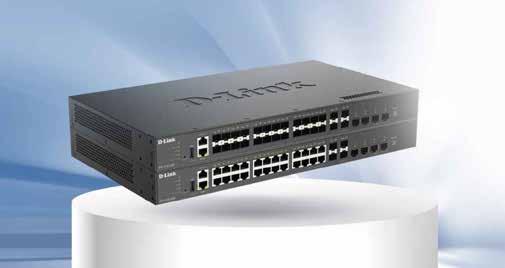
Gerard Allison, SVP Sales EMEA at Sophos, outlines the company’s “channel-first” strategy, recent innovations, and insights from the Sophos MSP Perspectives 2024 survey, emphasising advancements in ransomware defence and evolving cybersecurity trends
How does Sophos’ “channel-first, channel-best” strategy benefit your partners? Ransomware continues to be the most devastating cyberattack for organisations. MSPs and channel partners will need to rely on cybersecurity providers that have deep knowledge in threat intelligence and day-to-day adversary operations. The cybercriminal network has become so vast and intricate that most ordinary, everyday businesses simply can’t keep up with the volume of attacks, fast-changing TTPs, and attackers themselves.
Sophos offers a complete portfolio of security products and services to defend small and midmarket organisations. This includes network protection technologies like firewalls, zero-trust network access, Wi-Fi access points, switches, and NDR solutions. We also provide endpoint security with anti-ransomware capabilities as well as extended detection and response (XDR), mobile security and management tools, and data encryption solutions.
We also offer cloud-based email protection and cloud workload protection tools. For those without the staff and expertise or those who want to supplement their in-house security operations team, we also provide Managed Detection and Response (MDR) services. We provide customers with a Health Score and provide suggestions on how to improve security. If an organisation is under active attack, they should immediately call our Incident Response hotline for help.
What are the key features of the new Sophos Partner Care programme, and how does it support your partners?
Sophos has never been more committed to the channel, and we’re always looking for new and improved ways to support our partners. We saw a need to help partners create efficiencies, so they have valuable time back to focus on selling and supporting their customers with advanced security solutions and managed services. This has been in the works for some time, and we’re excited to officially introduce it to our partners.
With the new Partner Care offering, we’ve introduced a dedicated team of specialists to support partners with any kind of operational or non-sales needs. If, for example, a partner needs support with the creation of a quote or transferring a license they can easily reach this team for quick and easy support. We’re eliminating the administrative work for partners so they can focus on what’s most important – protecting our collective customers.
Can you highlight the key findings from the Sophos MSP Perspectives 2024 survey report?
The survey found that the biggest day-to-day challenge for Managed Service Providers (MSP) is keeping up with the latest cybersecurity solutions/technologies. Alongside this, MSPs indicated that hiring new cybersecurity analysts to keep up with customer growth and keep pace with the latest cyberthreats were also top challenges.
The survey also reveals that MSPs perceive the shortage of in-house cybersecurity skills to be the single biggest cybersecurity risk to both their own business and their clients’ organisations. MSPs also perceive stolen access data and credentials and unpatched vulnerabilities to be amongst the biggest security risks to their customers. Because of how many tools and techniques attackers deploy, channel partners cannot simply focus on one tool or technique to secure their customers’ systems. Layered security defenses are critical – and it’s important that they’re integrated and simple to manage.
How is Sophos adapting to the evolving cybersecurity landscape, and what new challenges are emerging?
Ransomware continues to be the most devastating cyberattack for organisations of all sizes. MSPs and channel partners will need to rely on cybersecurity providers that have deep knowledge in threat intelligence and day-to-day adversary operations. The cybercriminal network has become so vast and intricate that most ordinary, everyday businesses simply can’t keep up with the volume of attacks, fast-changing TTPs, and attackers themselves.
Sophos is the only provider that combines decades of attacker knowledge with real-time threat intelligence to ensure customers are confident we have their backs when it comes to who and what could attack them next. This knowledge is integrated into our MDR services

– humans who are actively monitoring for ransomware, data exfiltration and more – as far left on the attack chain as possible. It’s also built into all of our products, from endpoint, network and email to Sophos Central, our cloudbased management platform, to automatically react and stop attacks in progress.
How does Sophos equip its partners and managed service providers to tackle dynamic cybersecurity threats?
All of Sophos’ defenses operate 24x7, which is critical today. Our Sophos X-Ops team recently provided evidence in a report
what we all anecdotally know: criminal groups launch their attacks after business hours or on the weekends. When security teams go to sleep, attackers are waking up and going to work, breaking into networks and maneuvering to deploy ransomware. Together with MSPs and partners, our goal is to help customers overcome these challenges and disrupt attackers before they create victims, aggressively build and expand our business strategy to help MSPs and channel partners deliver innovative cybersecurity through Sophos’ Managed Detection and Response (MDR) and incident
response services and portfolio of solutions ranging from endpoint to network to cloud.
Can you share recent technological innovations at Sophos designed to enhance cybersecurity for clients?
Sophos continue to invest in technology innovations and expertise that we seamlessly integrate into our complete portfolio of cybersecurity solutions, including MDR services and endpoint, network and email protections. Each of these solutions has multi-year roadmaps focused on continual investment into the bet protection capabilities whilst keeping ease-ofuse, and supportability.
We will continue to invest in new technologies, such as Generative AI highly tuned for analyst augmentation, that further advance defenses against active adversaries and provide more organisations with the security confidence they need to remain operational.
What trends do you foresee in the cybersecurity industry, and how is Sophos preparing to stay ahead?
Ransomware continues to be the most devastating cyberattack for organisations of all sizes. As per our annual “State of Ransomware 2024” survey report, 59 per cent of organisations surveyed were hit by ransomware. Criminals are becoming more specialised at specific tasks and working in ever larger, complex networks to achieve their goals.
The development of AI will have a positive impact on the efficiency of IT teams and security teams by enabling them to strengthen defenses and work more efficiently, including through the processing of vast volumes of data in the aim of detecting anomalies. It should make it possible to respond more quickly in the event of an incident. The implementation of the European NIS2 Directive is also expected to force companies to take additional measures, particularly regarding their abilities to collect data sets.

Nicolai Solling, CTO of Help AG, highlights how leveraging modern technologies and strategic approaches can optimise cybersecurity investments and bolster protection without overspending
What are the latest technological advancements that organisations can leverage to optimise their cybersecurity investments and enhance protection without overspending?
Organisations can maximise their cybersecurity investments by fully utilising the capabilities of their existing technology platforms. For instance, platforms like Microsoft provide additional features that can be leveraged to enhance security. Many security vendors now offer integrated ecosystems that include capabilities for managing both security platforms and endpoints through a unified interface. This approach allows organisations to consolidate their security management into a single platform, improving efficiency and maximising the return on their technology investments.
How can technologies like AI and ML improve the process of rigorous validation and risk assessment in cybersecurity?
AI and machine learning significantly enhance risk assessment by analysing vast amounts of data more efficiently than manual methods. These technologies can process and interpret complex datasets to provide a more accurate and comprehensive risk evaluation. Unlike traditional methods that might use spreadsheets,
Advanced encryption remains crucial for protecting data, but future developments, such as quantum computing, may necessitate new encryption strategies.”
AI and ML can continuously update and refine risk assessments, allowing for better decision-making and more effective risk management.
What role do advanced threat detection technologies and automated threat intelligence play in continuous threat exposure management?
Advanced threat detection technologies and automated threat intelligence are crucial for managing continuous threat exposure. They enable organisations to identify and address vulnerabilities before attackers can exploit them. Automated systems provide realtime insights into potential threats, allowing for swift responses and reducing the window of opportunity for attackers. This proactive approach helps maintain a secure environment and mitigates the risk of security breaches.
How can organisations integrate next-gen cybersecurity technologies into their strategic management plans to better align with their business objectives?
Cybersecurity has become a strategic priority for organisations due to the increasing dependency on digital systems. Integrating next-gen cybersecurity technologies into strategic management plans involves aligning security measures with overall business objectives. This means incorporating technologies like Zero Trust, advanced encryption, and blockchain into the organisation’s core operations to ensure robust protection. Cybersecurity must be an integral part of digital transformation efforts to prevent disruptions and ensure the secure operation of IT systems.
What are the latest technological tools available for cybersecurity training and simulation, and how can they better prepare organisations for real-world cyber threats?
Recent advancements in training and simulation tools focus on
improving an organisation’s preparedness for cyber threats. These tools include automated platforms that simulate cyberattacks and assess organisational response, as well as intelligent cyber awareness programmes that adapt training content based on user performance. By enhancing user education and reaction capabilities, these tools help organisations build a more resilient defence against real-world cyber threats.
How can technologies like blockchain, advanced encryption, and Zero Trust architecture be utilised to transform cybersecurity spending into a significant driver for business success?
Blockchain technology offers promise for cybersecurity through its use in secure, shared ledgers for fraud prevention and other applications, particularly in the financial sector. Advanced encryption remains crucial for protecting data, but future developments, such as quantum computing, may necessitate new encryption strategies. Zero Trust architecture enhances security by continuously validating access and permissions, making it a fundamental element of modern cybersecurity. By integrating these technologies, organisations can turn their cybersecurity investments into strategic assets that drive business success and ensure operational continuity.
Are there any additional considerations for organisations regarding cybersecurity trends? One key trend to consider is the increasing frequency of Distributed Denial of Service (DDoS) attacks. These attacks target system availability and have seen a dramatic rise in recent years. Organisations should be proactive in developing strategies to mitigate DDoS threats to ensure that their digital systems remain operational and resilient against such disruptions.

Rick Vanover, Senior Director of Enterprise Strategy at Veeam, discusses the importance of a Zero Trust Data Resilience approach, emphasising the critical role of proactive backup strategies in safeguarding against modern threats
Four decades after a Scottish computer science professor coined the term, “zero trust” still stands as IT’s primary model for securing high-value assets. The model requires each and every user to verify their credentials – essentially to convince the system they’re not rogue actors trying to hack their way in.
But while the term is not new, the implementation of zero trust practices is evolving. For decades, most zero trust frameworks ignored the protection of data backup and recovery systems. The thinking was that resources should be concentrated on protecting the perimeter to stop attacks before intruders can get in and move throughout the system. Today, as ransomware attacks become more frequent and the value of data skyrockets, organisations are seeing the value of extending zero trust models principles to data and backup itself.
The tactical shift couldn’t come at a better time. A study of 1,200 IT professionals found that 85 per cent of organisations were hit by a ransomware attack over the past year, representing a 12 per cent increase in total
attacks compared to the previous year. And those attacks targeted valued assets. Nearly half (45 per cent) of these organisations’ production data was impacted during the attacks, putting their financial and operational health at risk.
The same study showed that 93 per cent of ransomware attacks directly targeted backup systems and data, where attackers feel they can cause the most damage. Three quarters of the victims of these successful attacks lost backup data and 39 per cent completely lost their entire backup repositories.
The data is hard to ignore: Attackers are targeting data backups. The most effective way to protect backups is to apply zero trust principles. While it’s important to apply zero trust policies to cybersecurity systems that keep intruders out, the numbers show that successful intrusions are more than likely to occur, elevating protection of data backups to the highest priority.
This requires a change in mindset toward the zero trust as a concept – that it’s not a “silver bullet to success.” Zero trust is a mindset, not a product, and not a rigid set of principles that can’t be adapted to address escalating levels of threats.
The U.S. Cybersecurity & Infrastructure Security Agency (CISA) launched the Zero Trust Maturity Model several years ago to define security strategies in an age when data fuels modern organisational business strategies. The model includes five pillars based upon the foundations of zero trust – identity, devices, networks, applications and workloads, and data. But it leaves out data backups.
A new model updates these concepts further. The Zero Trust Data Resilience (ZDTR) Maturity Model extends the five pillars from the CISA structure to backup and recovery systems.
The ZDTR model applies five core principals along with a reference architecture and a new set of

capabilities for the Zero Trust Maturity Model.
Here are how each of the five principles apply to data backup and recovery systems:
• Least privilege access: Like backup management systems, backup storage systems should be isolated on the network so that no unauthorised users can break in. This stops bad actors from getting access to critical backup copies – the “crown jewels” inside the castle –through network reconnaissance or exploiting a vulnerability.
• Immutability: Immutable backups ensure that specific sets of data can’t be modified or deleted by attackers if they gain control of the backup system. Immutability can be provided by the physical properties of storage
media or through technologies embedded at hardware, firmware, or software layers.
• System resilience: Since backup functions extend beyond the data itself, systems need to be hardened to protect the entire ecosystem of tools, technologies, and processes related to data backup and recovery. An important move is to segment the backup software and backup storage layers. This shrinks the size of the attack surface of backup repositories and limits the potential impact of a ransomware event.
• Proactive validation: To truly trust the efficacy of a backup system, it needs to be validated at any time. That means monitoring the backup system for network, performance and security. The data backed-up data itself, along with the reliability and effectiveness of recovery policies, need to be validated on a regular basis.
• Operational simplicity: Organisations can develop the most extensive, strategic security plans and still fail if the plans are too complicated to carry out.
Zero trust is a mindset, not a product, and not a rigid set of principles that can’t be adapted to address escalating levels of threats.”
The importance of data backup and recovery can’t be overstated. For years, organisations considered backups to be potentially deferrable budget items because the odds of getting breached were low. Now the script has flipped: The odds of getting attacked more than once are rising every year. Organisations should do whatever they can do now to ensure they have an absolutely portable, absolutely recoverable copy of their most critical data. Zero trust requires organisations to trust no one and verify everything. The ZDTR approach takes this to heart, elevating data backup and recovery to the highest level of importance in protection strategies. The approach maintains that the data copy – that crown jewel, that holiest of holy assets –needs to be protected at all times, assuming that all other safeguards are at risk of failing.
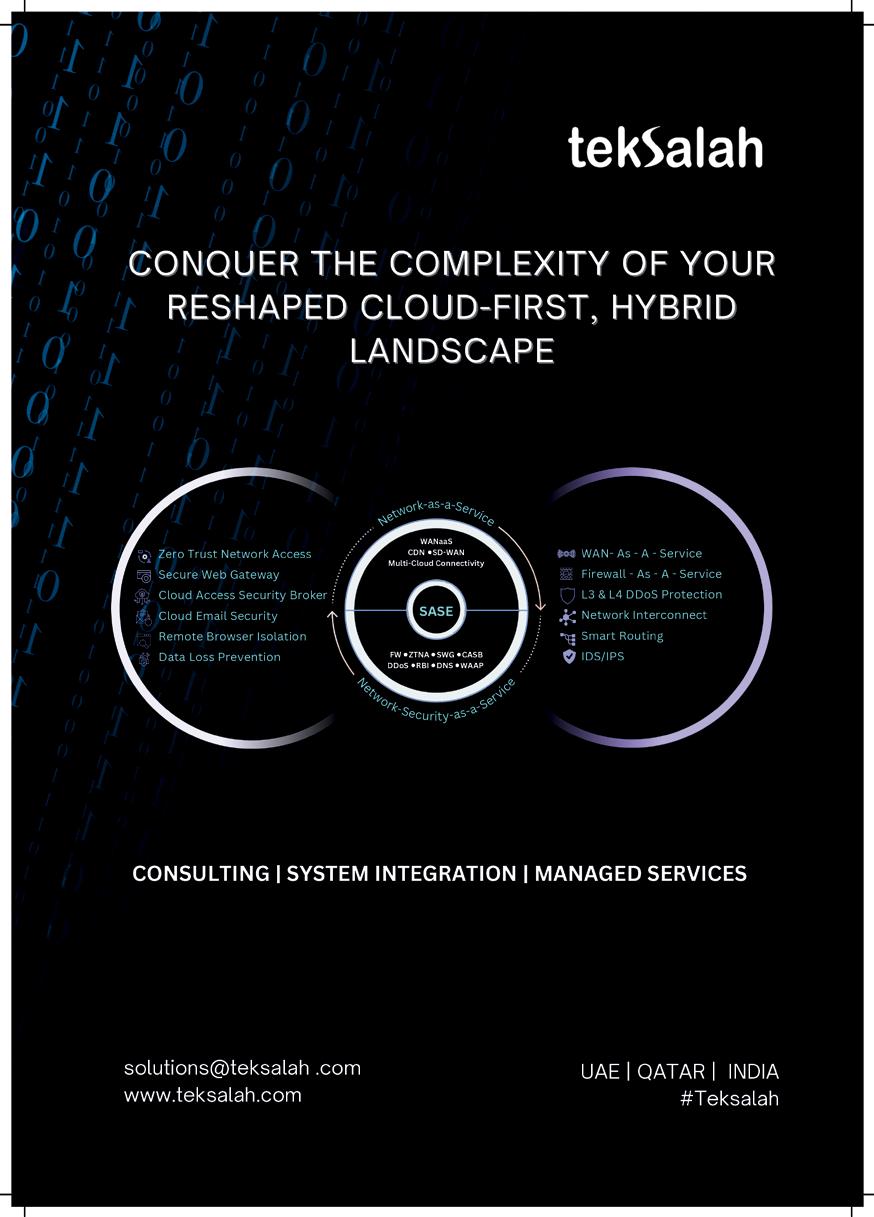
Ahmad Uzair,
Founder & CEO of
TechZoetic, delves into how the company’s deep expertise offers channel partners a competitive edge and the strategy to broaden its GCC footprint
How does TechZoetic’s expertise in Microsoft Power Platform and Dynamics 365 provide channel partners with a competitive edge in the market?
TechZoetic’s deep expertise in Microsoft Power Platform and Dynamics 365 equips channel partners with a significant competitive edge. We collaborate with partners across diverse industries and regions, enhancing their capabilities to scale their internal teams and broaden their service offerings. By leveraging our specialised knowledge, partners can upsell advanced solutions to existing clients and access new opportunities that were previously out of reach. This not only strengthens their market position but also drives growth and innovation within their client base.
What key advantages do channel partners gain when working with TechZoetic for CRM consulting and customisation services?
Channel partners working with TechZoetic for CRM consulting and customisation services benefit from our extensive experience across multiple industries, including Insurance, Retail, Manufacturing, Legal, and Travel & Tourism. This broad expertise enables us to gain a deep understanding of end customers’ businesses and tailor solutions to their unique needs. Our commitment to developing effective, long-term solutions not only provides channel partners with a competitive edge but also builds lasting trust with their clients.
How does TechZoetic ensure that its solutions remain
adaptable, enabling channel partners to meet evolving industry demands and technological advancements?
At TechZoetic, we prioritise adaptability by adhering to industry best practices during the development of our solutions. We design our solutions with built-in extensibility, allowing them to seamlessly adapt to evolving industry demands and technological advancements. This approach ensures that our solutions remain flexible, easily integrated with external services, and capable of accommodating changes in environments and technologies.
What strategies does TechZoetic use to help channel partners build strong customer relationships and deliver tailored business solutions effectively?
At TechZoetic, we focus on deeply understanding the end customer’s business and requirements before we begin any project. By thoroughly communicating our insights and understanding back to the end customer, we help our channel partners build trust and foster strong, long-term relationships. This approach ensures that we deliver high-quality, tailored solutions that meet the specific needs of each client effectively.
What are your goals for this year and the next year?
As we near the end of Q3 2024, our goals are to capitalise on the events in and around the UAE to expand our services throughout the
GCC region. We plan to increase brand awareness and diversify our offerings by launching industryspecific, ready-made solutions in October 2024. Additionally, we are actively seeking global partnerships to expand our partner network and facilitate mutual market entry, enhancing both our reach and that of our partners.

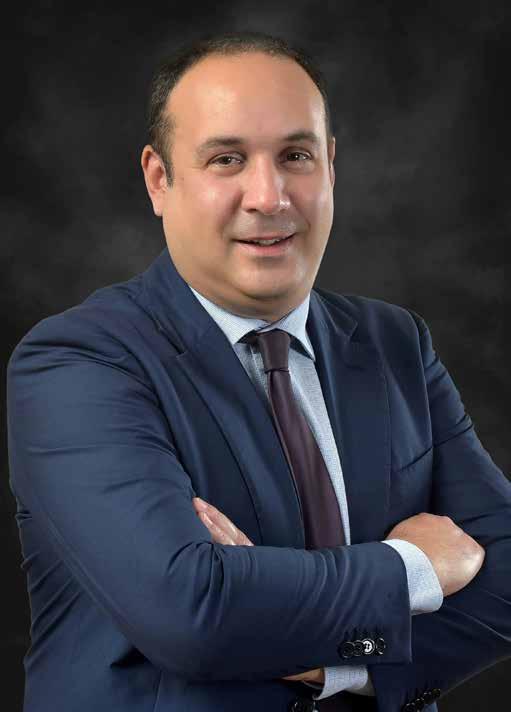
Tassos Peppas, Regional Director(METCA) at Vertiv, highlights the company’s commitment to advancing AI infrastructure through innovative solutions, tailored support, and strategic partnerships to meet the evolving demands of high-performance computing
What is the Vertiv AI Hub, and what resources and solutions does it offer for AI implementation?
Vertiv AI Hub is a comprehensive portal where our partners, customers and other industry professionals can access expert information, reference designs and resources to successfully plan their AI-ready infrastructure.
The Vertiv AI Hub features white papers, industry research, tools, and power and cooling portfolios for retrofit and greenfield applications. The reference design library demonstrates scalable liquid cooling and power infrastructure to support current and future chip sets from 10140kW per rack.
Reflecting the rapid and continuous changes in the AI tech stack and the supporting infrastructure, the Vertiv AI Hub is a dynamic site that will be frequently updated with new content, including an AI Infrastructure certification programme for Vertiv partners.
As ertiv, we are committed to providing deep knowledge, the broadest portfolio, and expert guidance to enable our customers to be among the first to deploy energy-efficient AI power and cooling infrastructure for current and future deployments. Our close partnerships with leading chipmakers and innovative data centre operators make us uniquely qualified to help our customers and partners on their AI journey.
How does Vertiv assist in developing deployment plans for transitioning to highdensity AI and HPC systems?
AI workloads are driving substantial shifts in how we power and cool data processed by highperformance computing (HPC) systems. Previously, IT racks typically operated at 5-10 kilowatts (kW), with anything above 20 kW considered high-density. However, with AI models accelerating IT through GPUs, power and cooling demands have surged.
While a typical CPU power consumption is currently pushed to 300W, a typical GPU that is utilised in AI applications can reach more than 1000W power consumption. This means that HPC systems can concentrate a considerable amount of power density as we previously mentioned up to 140 kW per rack. There are already indications that this can grow to 280 kW per rack in the next five years.
This transition necessitates significant upgrades across the entire power and cooling infrastructure, from the grid to the individual rack. Traditional cooling methods are insufficient for the heat generated by AI workloads, making liquid cooling and hybrid technologies essential for most deployments. Vertiv supports this transition by providing futureready power and cooling solutions that accommodate the growing demands of AI and HPC systems.
Vertiv’s key cooling technologies include:
Direct-to-chip liquid cooling: Cold plates remove 70-75 per cent of the heat generated by equipment, with the remaining heat managed by supplemental systems.
Rear-door heat exchangers: These replace traditional rack doors with heat-exchanging coils to absorb and remove heat efficiently (typically for rack heat densities of 20-50 kW per rack).
What distinguishes Vertiv’s support and services in AI technology implementation?
Vertiv stands out in AI technology implementation through its comprehensive, end-to-end approach, Vertiv 360AI, to critical infrastructure support, designed specifically to meet the unique demands of AI workloads. Here’s what sets Vertiv apart:
Expertise in high-density infrastructure by offering designing and deployment of high-density solutions, offering innovative products like the Vertiv 360AI platform.
Advanced cooling solutions as Vertiv leads in deploying cuttingedge liquid cooling technologies, including direct-to-chip cooling and rear-door heat exchangers.
Tailored service and support by providing customised service and support that goes beyond standard offerings. From initial design consultations to ongoing maintenance, Vertiv’s global network of experts works closely with customers to develop solutions that are tailored to their specific needs.
Scalability and flexibility by providing solutions that are flexible and adaptable, allowing customers to stay ahead in the fast-paced AI landscape. One example of such a solution is our recently launched Vertiv MegaMod CoolChip, a liquid cooling-equipped prefabricated modular (PFM) data centre solution engineered to enable efficient and reliable AI computing. By bringing together the quality and process efficiency enabled by offsite fabrication with bestin-class AI-ready technologies, MegaMod CoolChip can reduce the time to deploy AI-critical digital infrastructure by up to 50 per cent.
Global reach with local expertise with a presence in over 130 countries. This means that no matter where a customer is located, they receive consistent, high-quality support tailored to their regional requirements and regulatory standards.
In summary, Vertiv’s distinguished support in AI technology implementation lies in its ability to deliver specialised, high-density infrastructure solutions, advanced cooling technologies, and tailored services that enable AI systems to operate efficiently, reliably, and at scale.
What future AI innovations can we expect from Vertiv, and how are you preparing for the next five years?
Vertiv is committed to support the future of AI by developing cuttingedge solutions that address the growing demands of AI and highperformance computing (HPC)
environments. Over the next five years, we are focusing on several key areas to stay at the forefront of AI infrastructure innovation:
Advanced power train & thermal management technologies:
As AI workloads continue to scale, power and cooling will remain a critical challenge. Vertiv is investing in the next generation of power and cooling technologies that not only handle extreme loads but also optimise energy efficiency, renewable energy integration, and advanced heat reuse systems that will help data centres reduce their environmental impact.
Edge AI solutions:
With the rise of edge computing, AI is increasingly being deployed closer to the data source. Vertiv is developing tailored solutions for edge AI deployments, that will enable faster data processing, lower latency, and greater resilience at the edge, critical for applications like autonomous vehicles, smart cities, and IoT. Vertiv is continuing to invest in the prefabricated modular solution (PFM) to enable quick deployment, scalable and efficient solutions.
Collaboration and ecosystem development:
Vertiv is actively collaborating with AI hardware and software providers to create a robust ecosystem that supports the entire AI lifecycle. Earlier this year, Vertiv became a Solution Advisor: Consultant partner in the NVIDIA Partner Network (NPN) providing wider access to Vertiv’s experience and a full portfolio of power and cooling solutions. Vertiv is also collaborating with Intel to support the new Intel Gaudi3 AI accelerator. We continue building such relationships to co-develop solutions that are fully optimised for AI, from the chip level to the data centre infrastructure. Over the next five years, we will continue to build and expand these partnerships to accelerate AI innovation and adoption.
Shehab Shoukry, Vice President & General Manager for MENA at Coupa, offers an in-depth look at the company’s platform and its impact

What does the Coupa platform do and what challenges does it address?
Simply put, we help companies spend their money more efficiently and more effectively.
The foundation of the Coupa platform is built on the industry’s leading source-to-pay (S2P)
platform for both direct and indirect spend. Our platform is powered by community-generated AI across a network of millions of buyers and suppliers, and more than six trillion dollars in transactional data. This data serves as the pulse of the global economy and helps guide our customers to make smarter
spending, supply chain, and finance decisions that create durable and sustainable growth. With Coupa, businesses will multiply their margins and growth, drive smarter and more profitable decisions, and operate with confidence.
How did you get the idea for Coupa?
When Coupa was founded, the idea was simple: to make business buying easier. Our founders created a first of its kind software in the cloud, with ambitions to displace and disrupt legacy technology. That ambition inspired a slew of innovations and additions to make Coupa what it is today: a platform that spans across every single back-office operation, process, and task across procurement, sourcing, contract management, supply chain design and planning, cash management and payments.
Why did you think it was an important product for the market?
At the time, there was no procureto-pay (P2P) or source-to-pay (S2P) system that could provide companies with complete transparency of their spend. Businesses didn’t know how much they were spending, nor which suppliers they were spending with. They were not able to make strategic purchasing decisions. Current technologies took a long time to implement, they were cumbersome to use, hard to configure, and were not flexible or adaptable. That drove the need for a cloud-based software, which then paved the way for Coupa.
How does this product help and transform businesses? What is the kind of impact it has?
We are in the business of creating operating leverage for our customers, so they can redirect improved liquidity and margins toward growth. We are helping companies control their spending, optimise procurement processes, manage supplier relationships, aligning operational efficiencies to profitable growth and corporate reinvestment. The impact of our product empowers our customers with operational excellence and the ability to realise durable, profitable growth.
How did the founding team come together?
In 2006, Dave Stephens and Noah Eisner founded Coupa as a procurement software with the goal of offering open-source solutions. At that time, Coupa was self-funded by Dave and Noah. In 2009, Rob Bernshteyn took over as CEO. In 2016, Coupa went public. In 2022, Coupa was acquired by PE firm Thoma Bravo. And in 2023, we welcomed a new CEO, Leagh Turner, among several new executive leaders.
How does the product work and how has it evolved and grown from the MVP?
Coupa originated as the first of its kind procurement software in the cloud. Over the past 15 years, we expanded the scope of our technology to support sourcing, contracting, risk, payments, supply chain, treasury and more. We also embedded AI throughout the platform to help increase efficiencies across these functions. To describe all of this collectively, we coined the term business spend management (BSM). (A full history of our acquisitions and major product launches is here).
Coupa’s dataset started with a single interaction between a buyer and a supplier. Then, as our network of buyers and suppliers grew, so too did the interactions and transactions. Minute by minute and day by day, the data compounded and brought us to this point we’re
The impact of our product empowers our customers with operational excellence and the ability to realise durable, profitable growth.”
at today. - which is a $6T treasure trove of data reflecting every transaction this community has ever made.
From purchases and approvals, to invoices, contracts, and supply chain models – and everything in between. Today, we’re laser focused on helping our customers navigate the complexities and uncertainties of a structurally different global economy. We help companies realise their potential by optimising their two most important assets - their money and their people.
What sets your product apart from the competition?
We have by far the largest dataset in our industry. Our customers have entrusted us with their data for 15 years and our data represents +$6 trillion in spend and a network of 10 million buyers and suppliers. What that means is that every transaction that happens on our platform – every sourcing event, every purchase, every supplier risk score, every contract, every invoice, every supply chain model – is captured in a structured way. This is Coupa’s global economy data. We analyse this data, we train AI with it, and then we generate prescriptive insights and recommendations for
our customers. This is what we call community-generated AI. And this AI and data is unique to Coupa, and helps our customers do their jobs smarter and better, which helps their companies operate smarter and better.
What are your plans going ahead?
We’re going to continue doubling down on AI and weaving it throughout our entire platform. We’re going to continue to train it with the anonymised and transactional data generated by our customers to help them make better, more profitable decisions -- faster. For example, at Coupa Inspire in April 2024, our annual global community conference, we launched new innovations to help businesses drive new levels of autonomy with AI, including:
• Contract Intelligence helps teams prevent revenue loss and make faster and more informed decisions. It uses AI to analyse and extract key data, enabling users to load third-party contracts and create records automatically. Contract amendments can be tracked comprehensively and more effectively, which helps reduce risk. What used to take hours of manual work, now takes seconds.
• Purchase Order (PO) Collaboration Intelligence keeps businesses running and increases supply chain resiliency by reducing lead times, expediting troubleshooting, and improving delivery performance. For instance, it uses AI to automate order change requests by processing emails to generate PO confirmations.
• Coupa Navi, a GenAI-based AI agent, provides real-time support and guidance helping teams make smarter decisions faster. Navi guides users through intake and purchase requests, auto-populates forms, creates personalised dashboards, surfaces key data and insights, and speeds up approval cycle times.
Thierry Nicault, Area Vice President and General Manager, Middie East, Salesforce, discusses how leveraging unstructured data can empower companies to thrive in the AI era
Every organisation is racing to unlock the power of AI to improve its sales and service experiences. But great AI requires data.
Traditionally, companies have handled data that is found in structured formats, with rows and columns, including customer engagement data gathered through CRM applications. Every business also has a huge amount of information trapped in “unstructured” data, in formats such as documents, images, audio and video recordings. This unstructured data could be highly valuable, providing businesses with AI insights that are more accurate and comprehensive because they are grounded in customer information.
Many organisations want a holistic customer view but lack the technical ability to see, access, integrate, and make use of their unstructured data in any trusted way. With the power of large language models (LLMs) and generative AI, they can now do just that.
To win in the AI era, successful organisations will need to build integrated, federated, intelligent, and actionable solutions across every customer touchpoint while also reducing complexity.
This starts with the capability to effectively tap into unstructured content, gather knowledge, index the data efficiently, and pull insights from every department.
When a customer needs help with a recent purchase, typically they start the conversation with the company’s

chatbot. For the experience to be both relevant and positive, the entire exchange needs to be grounded in that customer’s data, such as their recent product purchase, warranty information, and any past conversations they’ve had. The chatbot should also be tapping into company data, such as the latest learnings from other customers who have bought similar products and internal knowledge base articles.
Some of this information might reside in transactional databases — structured information — while the rest might be in unstructured files, such as warranty contracts or knowledge base articles. Both types of data need to be accessed, and the right data needs to be utilised. If not, the exchange with the chatbot will be at best frustrating and at worst inaccurate.
Obtaining the best and most accurate AI responses requires augmenting LLMs with proprietary, real-time, structured and unstructured data from within a company’s own applications, warehouses, and data lakes.
An effective way of making those models more accurate is with an AI framework called Retrieval Augmented
Generation (RAG). RAG typically enables companies to use their structured and unstructured proprietary data to make generative AI more contextual, timely, trusted, and relevant.
Combining all your customer data, structured and unstructured, into a combined 360-degree view will ensure customers have the most relevant information for any enterprise scenario. Financial institutions, for example, can use it to provide real-time information on market or financial data to their employees, who can take that information and blend it with a customer’s own unique banking needs to give them actionable advice based on their situation.
Many companies are exploring the use of RAG technology to improve internal processes and provide accurate and up-to-date information to advisors and other employees. Offering contextual assistance, ensuring personalised support, and continuous learning will improve efficiency in decision-making across their organisation.
For organisations preparing their data for AI, first, they have to know where all of their data is and understand its quality - and whether it is good enough for their generative AI models. Second, they have to ensure their data is fresh, relevant, and retrievable, so they can combine structured and unstructured data for the best outputs. Thirdly, they have to activate that data across their applications and build the right pipelines so RAG can pull that data when prompted and provide the answers they need.
14 - 18 OCT 2024



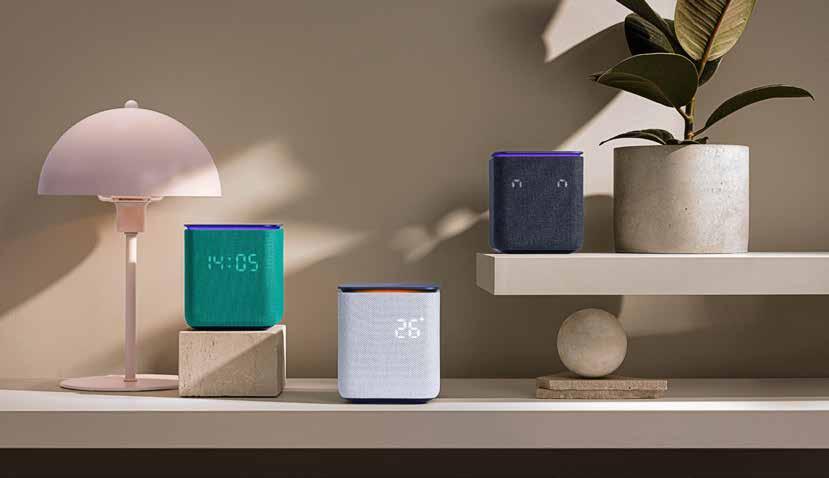
Yango Group announces the launch and immediate availability of the Yasmina Midi and Yasmina Mini smart speakers. The speakers feature a bilingual, humanlike AI assistant tailored specifically to the Middle East. Available for purchase across the UAE, Yasmina speakers offer a unique experience with an assistant that can maintain engaging and fun conversations in both Khaleeji Arabic and English that feel like talking to a real person.
More AI capabilities unlocked with Yasmina Midi and Mini speakers Yasmina Midi and Yasmina Mini combine advanced technology with a deep understanding of the region’s unique cultural nuances. This is made possible by Yasmina, the AI assistant built into the speakers.
Powered by a proprietary large language model (LLM), Yasmina engages in human-like conversations in both Khaleeji Arabic and English and can even tell local jokes. This experience is now available in two new products — the Yasmina Midi and Mini speakers,
which unlock Yasmina’s potential with advanced technologies:
• Personalised content: Yasmina can identify up to four family members by voice and adapt to their preferences. It remembers their likes and dislikes and suggests songs they might enjoy based on their tastes. When interacting with children, Yasmina provides age-appropriate content.
• Multimodal interaction: Yasmina can display information such as the time and weather and communicate emotions on the LED screen. Yasmina also uses dynamic lighting to match the mood of the music or interactions.
• Cultural immersion: Yasmina can recite surahs from the Holy Quran, play Adhans, and tell you the date according to the Hijri calendar. It also knows the prayer times for any city in the world.
Yasmina smart speakers: key features
Equipped with three speakers, including a subwoofer and two tweeters, Yasmina
Midi fits well into spaces of up to 300 square feet. Yasmina Mini is a smaller speaker that delivers clear and balanced sound, optimal for smaller spaces of up to 200 square feet.
Yasmina speakers are equipped with a mute button for enhanced user privacy. When the button is on, the microphones are disconnected, and Yasmina cannot respond to voice commands.
The speakers can act as smart home hubs, enabling users to control their environment through voice commands. Yasmina Midi is equipped with Zigbee and Wi-Fi capabilities, while Yasmina Mini integrates with compatible smart home systems via Wi-Fi.
Yasmina Midi and Yasmina Mini are now available for purchase through various retail and online outlets across the UAE, including Virgin Megastore, Jumbo Electronics, Sharaf DG, and noon.com. Yasmina Midi is priced at AED 449, while Yasmina Mini is available for AED 279.

Microsoft announced the general availability of the all-new Surface Pro and the all-new Surface Laptop to empower users in the UAE to unlock new experiences and accelerate their Artificial Intelligence (AI) transformation journey. The devices are part of Microsoft’s Copilot+ PCs portfolio, a new category of Windows PCs designed for AI.
Copilot+ PCs are the fastest, most intelligent Windows PCs ever built. With powerful new silicon capable of 40+ TOPS (trillion operations per second), all–day battery life and access to the most advanced AI models, Copilot+ PCs are designed to achieve a level of performance never seen before. They also come with a host of cutting-edge features including Recall, which enables users to instantly find anything that they have seen on their PC; Cocreator, which generates and refines AI images in real time; and Live Captions, which instantly translates any live or pre-recorded video from 44 languages, including Arabic, into English.
Adam Labancz, Surface Category Manager at Microsoft UAE, said that the new Surface devices have been designed for students, professionals and enthusiasts, looking to enhance their productivity by the power of AI experiences we have never seen before.
“Over the past year, we have seen an incredible pace of AI transformation with solutions such as Microsoft Copilot allowing us to do things that we never dreamed possible – and now, we begin a new chapter of AI innovation by introducing our first-ever Copilot+ PCs from Surface.”
The Microsoft Surface Pro 11th Edition Copilot+ PC is designed to empower consumers that are always onthe-go with lightning-fast performance, AI-accelerated power and a stunning optional OLED display – all in a thin, light and versatile package. Built with the new Snapdragon X Elite and Snapdragon X Plus processors, the device delivers incredible performance that is 90 per cent faster than the Surface Pro 9. When docked in at the office, the powerful 2-in-1 supports fast connectivity with Wi-Fi 7, and the ability to connect up to three 4k monitors. In addition, the all-day battery life of up to 14 hours provides peace of mind for users on the go.
Similarly, the Microsoft Surface Laptop 7th Edition Copilot+ PC empowers users to accelerate innovation, solve problems faster and drive business impact with new AI capabilities and Copilot experiences powered by the new Snapdragon X Elite and Snapdragon X Plus processors. The laptop has been completely redesigned
from the ground up to help users be even more productive with stunning new brighter displays with razor-thin bezels, more ports than ever before, faster connectivity with Wi-Fi 7, and up to 22 hours of battery life. The laptop is available in two sizes: the 13.8-inch display in a more compact design and a 15-inch display for expanded visuals.
Both devices have been developed to be secure by default, Adam Labancz explained. “At Microsoft, we believe that the best way to secure information on a PC is to secure the whole PC itself. All Copilot+ PCs are Securedcore PCs, bringing advanced security to both commercial and consumer devices. In addition to the layers of protection in Windows 11, Secured-core PCs also provide advanced firmware safeguards and dynamic root-of-trust measurement to help protect from chip to cloud.”
Furthermore, a Microsoft Pluton security processor will be enabled by default on all Copilot+ PCs. Pluton is a chip-to-cloud security technology – designed by Microsoft and built by silicon partners – with Zero Trust principles at the core. This helps protect credentials, identities, personal data and encryption keys, making them significantly harder to remove from the device, even if a user is tricked into installing malware or an attacker has physical possession of the PC. All Copilot+ PCs, including the all-new Surface Pro and Surface Laptop, will ship with Windows Hello Enhanced Sign-in Security (ESS). This provides more secure biometric sign ins and eliminates the need for a password.
The Microsoft Surface Pro 11th Edition Copilot+ PC and the Microsoft Surface Laptop 7th Edition Copilot+ PC will be available in the UAE from 27th August. Estimated retail price for the Microsoft Surface Pro 11th Edition Copilot+ PC will start from AED 4099, while the price for the Microsoft Surface Laptop 7th Edition Copilot+ PC will start from AED 3999.

Vertiv has named Frank Poncheri as the new Chief Human Resources Officer (CHRO), reporting to CEO Giordano (Gio) Albertazzi. He will lead HR
strategy, development and execution, further reinforcing Vertiv’s strategic priorities and behaviours.
Poncheri has more than 15 years of experience in HR and corporate strategy, with emphasis on global employee development, talent management, and high-performance culture. He previously held roles as vice president of HR and corporate integration, divisional HR director, and various other roles during his 10-year tenure with Owens Corning in the United States and Finland. He began his career in HR at GE Aerospace, after completing their intensive HR Leadership Program.

NTT DATA announced the appointment of Rami Beidas, as Country General Manager for Kingdom of Saudi Arabia. Rami’s appointment strengthens NTT DATA’s Middle East and Africa operations and focuses on driving growth, innovation and customer experience across the Kingdom.
As the country head, Rami will be responsible for steering the strategic direction and expanding NTT DATA’s footprint in Saudi Arabia. His responsibilities will include
driving sales, strengthening and introducing new products and service offerings, and improving customer experiences. He will also play a key role in strengthening collaborative relationships with NTT DATA partners in the region.
“We are delighted to welcome Rami Beidas to our Middle East team. His appointment is a significant step forward in our plans to support Saudi Arabia’s Vision 2030 through cutting-edge digital transformation. Rami’s deep understanding of the Saudi market, combined with his vast industry experience, will be instrumental in driving our growth, expanding our portfolio, and delivering innovative, tailored solutions to meet the unique needs of this region,” said Burcak Soydan, NTT DATA Managing Executive, in the Middle East.
With over 20 years of extensive experience in the telecommunications and IT sectors, Rami Beidas brings expertise and proven leadership to his new role. He joins NTT DATA
“As Vertiv continues to drive innovation and industry leadership, our continued success is heavily influenced by the quality of our teams. To provide our customers with the highest experience and deliver on our promise to our investors, cultivating employees that will thrive in our high-performance culture is critical” said Albertazzi. “I am confident that Frank will help us foster a world-class organisation.”
“This is an exciting time to be in the critical digital infrastructure space and an opportune time to secure the right talent,” said Poncheri. “I look forward to furthering Vertiv’s position in this industry, by leading HR strategy and equipping employees with the tools and environment that will enable individual and company growth.”
from IBM, where he as the Ecosystem System Leader, was instrumental in advancing IBM’s partner landscape in Saudi Arabia. His prior experience includes a consultancy role at the Ministry of Communications and Information Technology (MCIT), where he successfully managed and executed Saudi Arabia’s first IT exhibition, LEAP, in 2021. Rami’s career also features a 14-year tenure at Cisco, where he held various leadership roles, culminating in his position as Enterprise & Commercial Leader, as well as serving as Sales Manager at Ingram Micro APTEC.
“With its global expertise, innovative solutions, and strong local presence, NTT DATA, is well-positioned to help organisations capitalise on the opportunities presented by the Kingdom’s Vision 2030. I am thrilled to lead the company’s strategy at such a transformative time for the region. As we expand our footprint in the Kingdom, my focus will be to work closely with our talented team to drive innovation, enhance customer experience, and contribute meaningfully to Saudi Arabia’s digital transformation journey,” said Rami Beidas, Country General Manager for NTT DATA in the Kingdom of Saudi Arabia.

Veeam Software has announced the appointment of Niraj Tolia as Chief Technology Officer (CTO), following Veeam’s acquisition of Alcion, a security-first, AI-driven data management startup co-founded by Tolia and Vaibhav Kamra. This
strategic move strengthens Veeam’s leadership in data resilience, with Tolia leading product strategy and engineering efforts for the Veeam Data Cloud (VDC).
In his new role, Tolia will work closely with Anton Gostev, Veeam’s Chief Product Officer, to drive innovation in the VDC platform, expanding Veeam’s industry-leading data resilience solutions into a more powerful and flexible suite of services. Tolia brings deep technical expertise and familiarity with Veeam’s culture, having previously co-founded Kasten, a Kubernetes data resilience solution acquired by Veeam in 2020.
Veeam’s CEO, Anand Eswaran, expressed confidence in Tolia’s ability to shape the future of Veeam’s data resilience strategy, highlighting his proven success in building Kasten
into the #1 Kubernetes data resilience solution. Eswaran noted that the combination of Tolia’s leadership and the rapid growth of Veeam Data Cloud presents a significant opportunity to redefine the market for data resilience.
Tolia’s extensive experience in cloud-native technologies and data management, along with the Alcion team’s AI and security capabilities, will play a crucial role in advancing Veeam’s mission to deliver cuttingedge data protection and resilience solutions. Tolia emphasized the importance of customer-centricity in today’s digital landscape, where data protection is critical. He believes that integrating Alcion’s capabilities with Veeam Data Cloud will further enhance Veeam’s position as a leader in data resilience.

Nutanix announced that Chris De Vere has been appointed as its new EMEA Managed Service Provider (MSP) Leader. As of 1st August, De Vere will lead Nutanix’s team of MSP Sales and Business Development Managers, some of whom are already with the company and will move into De Vere’s team, others will
be recruited as part of approved headcount investments for FY25.
The appointment is part of Nutanix’ consolidation of its MSP sales efforts and resources in EMEA following its EMEA Channel organisation. The changes will support accelerated development of Service Provider opportunities with Account Executives as well as better handling of ecosystem requirements for the MSP Channel, such as developing Nutanix’ Service Provider Aggregator ecosystem.
“I feel in good company, and I am very happy to be here,” commented De Vere. “I look forward to building an MSP team and practice that will not only deliver incremental success to Nutanix, but also inspire innovative thinking and partnerships.”
De Vere joined Nutanix recently from a 13 year spell at VMware. In his
final role there, he was responsible for VMware’s MSP SaaS business across EMEA. Prior to VMware, he spent 11 years at IBM. De Vere lives in the South of England, is married with a grown-up daughter. His main interests outside of work are motor boating across the South Coast of England.
Sven Schoenaerts, Head of Channel Sales EMEA, Nutanix, said: “We are breaking new ground with this set up and Chris will bring deep subject matter and leadership experience to the role. Our longstanding commitment to the partner ecosystem has delivered sustained customer satisfaction and profitable expansion for our partners. We look forward to working with the MSP ecosystem in the same way, and I am thrilled to have Chris on the team to pave the way.”






Marketing leaders reveal how they tackle outdated tools, unify customer data, and harness AI to drive personalisation and real-time marketing. Discover their strategies for boosting ROI and enhancing customer engagement.
As a marketing professional, overcoming outdated tools while implementing AI involves upgrading your technology infrastructure to support new solutions. Focusing AI on high-impact marketing areas for immediate gains. Provide training to your team for smooth adoption, and use hybrid models to leverage both old and new tools effectively. Continuously evaluate and refine the integration to maximise
To boost ROI, start by implementing a Customer Data Platform (CDP) to centralise data from various sources, creating a comprehensive customer view for precise targeting and personalised marketing. Integrate marketing technologies to ensure consistent data flow and accurate insights across platforms. Leverage this unified data for personalised campaigns, employ predictive analytics to optimise timing and content, and ensure a coherent multi-channel experience. Enhance segmentation, monitor performance in real-time, and continuously analyse ROI to
AI is reshaping personalisation and real-time marketing by leveraging data to predict customer preferences, segment audiences, and deliver tailored content and recommendations. It facilitates dynamic pricing and real-time ad targeting, enhancing relevance and engagement. AI-driven chatbots provide immediate customer support, while predictive analytics fine-tune strategies on the fly. These advancements ensure marketing efforts are highly personalised, responsive, and effective, significantly improving customer satisfaction and business outcomes.

DOLLY LAKHANI
Regional Marketing Head, Tech First Gulf FZ LLC
At Tech First Gulf (TFG), we overcome challenges with outdated tools by upgrading our technology stack and integrating AI through middleware and APIs, allowing us to modernise without completely replacing legacy systems. We invest in upskilling our teams, ensuring they can effectively adopt and utilise AI-driven solutions. Additionally, we collaborate with AI-focused vendors, giving us access to the latest innovations, which helps us stay competitive and successfully implement AI across our operations.
Our strategy for unifying customer data focuses on creating a centralised data ecosystem. We integrate data from multiple touchpoints—such as sales, marketing, and customer engagement—into a unified platform using CRM tools and data analytics solutions. By leveraging AI-driven insights, we gain a 360-degree view of customer behaviour, enabling us to tailor campaigns, optimise engagement, and make data-driven decisions. This approach enhances customer targeting, leading to higher ROI and long-term business growth.
Today, AI tools are driving hyper-personalisation in content, leading to “hyperproductivity” in content strategy and marketing. By leveraging AI, brands can optimise content creation and deliver highly personalised experiences, significantly reducing the time and resources needed for these tasks. This increased efficiency not only lowers costs but also allows marketing teams to focus on more strategic, highimpact initiatives.

TALLYA ANNASHEF
Marketing Specialist, Emerging Markets, Palo Alto Networks
Firstly, Addressing the challenges of outdated tools starts with modernising existing systems. Upgrading legacy systems allows us to seamlessly integrate AI, ensuring it works alongside existing tools without disrupting day-to-day operations. Equally important is providing continuous staff training on the importance and functionality of AI. This ensures teams are equipped to adapt to the new technology and helps bridge the gap between older tools and innovative AI capabilities, maximising efficiency.
Data-driven marketing is no longer just an innovative concept; it’s essential to making your marketing strategy effective and impactful. To boost ROI, it is important to centralise all customer data into one platform, creating a complete view for personalised marketing. By integrating data from email, website interactions, and social media, we build comprehensive customer profiles allowing us to deliver tailored marketing campaigns improving conversions and overall ROI.
I use AI-driven insights to gain a deeper understanding of customer preferences, predict their needs, and identify the products or content they’re most likely to engage with. This level of personalisation helps us deliver the most relevant messaging at the right time, increasing customer engagement and strengthening relationships. This also allows us to respond quickly and effectively to any changes in customer behaviour, keeping marketing engagements relevant and timely.


Leading the way in switches and network solutions for the telecommunication industry since 1987
From secure connectivity to seamless performance, our switches and networking solutions are built to keep you ahead in an ever-evolving digital landscape.
Trusted by clients and partners worldwide, we deliver the value and reliability you need.
For more information, please contact one of our
